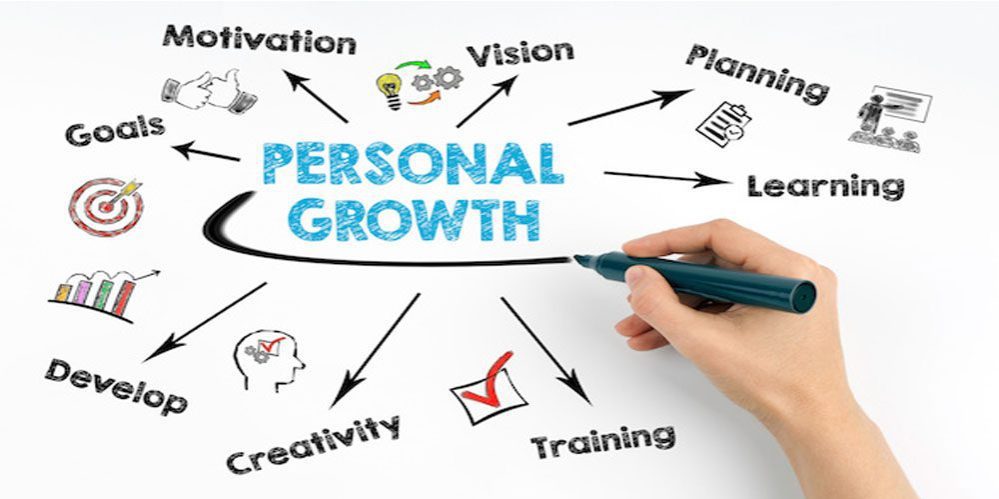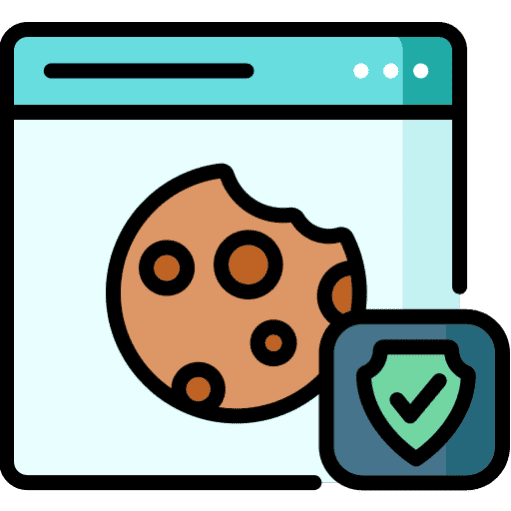Have you ever felt an inexplicable sadness or a lingering sense of insecurity that you can’t quite shake off? These feelings might be the echoes of your inner child—an essential part of your subconscious that carries the joys, fears, and wounds of your early years. Healing this inner child can lead to profound emotional growth and a more fulfilling life. In this comprehensive guide, we’ll explore ten transformative techniques to heal your inner child and achieve lasting emotional well-being.
Understanding the Inner Child
The concept of the inner child refers to the part of our subconscious that retains the emotions, experiences, and memories of our early years. This inner child is not a separate personality but rather an integral part of our psyche that influences our feelings, behaviors, and reactions as adults.
The Role of the Inner Child in Emotional Health
The inner child holds the key to many of our emotional responses and patterns. When nurtured and healed, it can bring joy, creativity, and a sense of wonder to our lives. Conversely, if neglected or wounded, it can lead to emotional pain, insecurity, and unhealthy coping mechanisms.
Signs Your Inner Child Needs Healing
- Intense Emotional Reactions: Overreacting to minor incidents.
- Fear of Abandonment: Persistent worry about being left alone.
- Low Self-Esteem: Feeling unworthy or inadequate.
- Difficulty Trusting Others: Struggling to build close relationships.
- Perfectionism: Feeling the need to be perfect to earn love and approval.
Recognizing these signs is the first step towards healing your inner child and transforming your emotional well-being.
Why Healing Your Inner Child Matters
The Impact of Childhood Trauma on Adult Life
Childhood trauma can have long-lasting effects on our mental and emotional health. Unresolved issues from our early years often manifest as anxiety, depression, relationship problems, and even physical health issues in adulthood. Healing your inner child can help you address these underlying issues and improve your overall well-being.
Benefits of Healing Your Inner Child
- Enhanced Self-Esteem: Developing a positive self-image.
- Better Relationships: Forming healthier and more fulfilling connections.
- Emotional Resilience: Coping with stress and adversity more effectively.
- Increased Joy and Creativity: Reconnecting with your playful and imaginative side.
Personal Anecdotes or Case Studies
Consider Sarah, who always felt a deep sense of abandonment stemming from her parents’ divorce when she was young. Through inner child work, Sarah learned to acknowledge and soothe her inner child’s fears. She began to feel more secure in her relationships and developed a stronger sense of self-worth.
Acknowledge Your Inner Child
The first step in healing your inner child is to acknowledge its existence and validate its feelings. This means recognizing the part of you that feels vulnerable, scared, or hurt. Speak kindly to your inner child, as you would to a real child, and assure it that you are here to protect and love it.
Practical Techniques
- Daily Check-Ins: Spend a few minutes each day connecting with your inner child. Ask yourself how you feel and listen to your emotions.
- Affirmations: Use positive affirmations to reassure your inner child. Phrases like “I am safe,” “I am loved,” and “I am worthy” can be powerful tools for healing.
Hug Yourself Daily
Physical touch is a fundamental human need, and it can be incredibly healing. Hugging yourself may sound strange, but it provides comfort and reassurance to your inner child. Self-hugging releases oxytocin, the “love hormone,” which can reduce stress and promote feelings of safety and well-being.
Butterfly Hug Technique
The butterfly hug is a self-soothing technique used in trauma therapy. It involves crossing your hands over your chest, linking your thumbs together, and tapping your chest alternately. This rhythmic tapping can help calm your nervous system and process trauma.
Step-by-Step Guide to the Butterfly Hug:
- Cross your hands over your chest: Place your right hand on your left shoulder and your left hand on your right shoulder.
- Link your thumbs together: This forms the butterfly’s body.
- Position your fingertips just below your collarbones.
- Tap your chest alternately: Start with your left hand, then your right hand, and continue this rhythm.
- Breathe deeply: Take slow, deep breaths and observe your thoughts and feelings without judgment.
Picture a Happy Childhood Moment
Revisiting happy memories from your childhood can be incredibly soothing for your inner child. These memories remind you of times when you felt safe, loved, and joyful. They help counteract negative experiences and bring a sense of security and warmth.
Techniques for Visualizing and Feeling Secure
- Close Your Eyes: Find a quiet place, close your eyes, and take a few deep breaths.
- Recall a Happy Memory: Think of a specific moment from your childhood that made you feel happy and safe. It could be a family vacation, a birthday party, or a simple moment of joy.
- Engage Your Senses: Try to remember the sights, sounds, smells, and feelings associated with that memory. The more vivid the memory, the more effective the exercise will be.
Creating New Happy Memories
If you struggle to recall happy childhood moments, you can create new ones through visualization. Imagine a scenario where you felt loved and secure, and spend a few minutes each day visualizing this scene. Over time, these positive images can help reprogram your subconscious mind and bring healing to your inner child.
Mirror Work
Mirror work is a powerful technique for developing a positive self-relationship and overcoming negative self-beliefs formed during childhood. By looking deeply into your own eyes and speaking affirmations, you can begin to see yourself with more compassion and love.
Practical Steps for Mirror Work
- Find a Quiet Space: Stand or sit in front of a mirror in a quiet place where you won’t be disturbed.
- Make Eye Contact: Look into your own eyes. This can feel uncomfortable at first, but try to hold the gaze.
- Speak Affirmations: Say positive affirmations out loud. Some examples include:
- “I am worthy of love and respect.”
- “I matter and what I want matters.”
- “I will not stay silent; my voice is important.”
- Repeat Daily: Practice this exercise daily for the best results.
Examples of Powerful Healing Statements
- “I forgive myself for the mistakes I’ve made.”
- “I am proud of who I am becoming.”
- “I am deserving of happiness and peace.”
Practice Self-Compassion
Practicing self-compassion is crucial for emotional healing and building a healthy relationship with yourself. When you treat yourself with the same kindness and understanding that you would offer a friend, you can reduce anxiety, stress, and depression. According to research by Dr. Kristin Neff, a leading expert in self-compassion, being kinder to ourselves can significantly improve our mental health.
Techniques to Cultivate Self-Compassion
- Self-Compassionate Journaling: Write about your experiences and feelings with a compassionate tone. Reflect on your struggles and offer yourself words of encouragement and understanding.
- Positive Self-Talk: Replace negative self-talk with positive affirmations. For example, instead of saying, “I’m such a failure,” try, “I’m doing my best, and that’s enough.”
- Self-Compassion Meditation: Engage in meditation practices that focus on self-compassion. This can include guided meditations that encourage you to extend kindness and understanding to yourself.
- Challenging Your Inner Critic: Identify the critical voice inside your head and challenge its negative messages. Ask yourself if you would speak to a friend in the same harsh way, and if not, change the narrative to a more supportive one.
Write a Letter to Your Inner Child
Writing a letter to your inner child can be a deeply healing experience. It allows you to express the words of love and support that you needed to hear as a child. This practice helps in acknowledging and validating your inner child’s emotions, fostering a sense of safety and understanding.
Practical Tips for Writing a Heartfelt Letter
- Set the Scene: Find a quiet, comfortable space where you can write without interruptions. Light a candle or play soothing music if it helps you relax.
- Use Compassionate Language: Write to your inner child with the same love and care you would offer a young child. Acknowledge their pain and reassure them that they are loved and protected.
- Express What You Needed to Hear: Reflect on the difficult moments from your childhood and write the words you wish someone had said to you. This might include affirmations of love, worthiness, and safety.
- Use the Non-Dominant Hand Technique: For a deeper connection, try writing with your non-dominant hand. This technique can help access deeper emotions and memories.
Identify Your Emotional Triggers
Emotional triggers are intense reactions to specific situations that stem from unresolved childhood experiences. Identifying these triggers is crucial for understanding the root causes of your emotional responses and working towards healing them.
Managing and Soothing Triggers
- Reflect on Your Reactions: When you experience a strong emotional response, take a moment to reflect on what triggered it. Ask yourself if this reaction is tied to a past experience.
- Journal Your Triggers: Keep a journal to document your emotional triggers and the situations that provoke them. This can help you identify patterns and understand the underlying issues.
- Reassure Your Inner Child: When you identify a trigger, take a moment to reassure your inner child that they are safe and loved. Remind yourself that the current situation is different from the past.
- Create a Safe Space: Develop strategies to create a sense of safety and comfort when you feel triggered. This might include deep breathing, grounding exercises, or seeking support from a trusted friend or therapist.
Make Time for Play
Play is not just for children; it’s a vital part of emotional healing for adults as well. Engaging in playful activities can help you reconnect with your inner child, fostering joy, creativity, and a sense of freedom.
Ideas for Playful Activities
- Art and Craft: Engage in creative activities like drawing, painting, or crafting. These activities allow you to express yourself freely and reconnect with your inner child’s creativity.
- Physical Play: Participate in physical activities that you enjoyed as a child, such as playing sports, dancing, or even running around in nature.
- Games and Puzzles: Spend time playing board games, solving puzzles, or engaging in other fun activities that challenge your mind and bring joy.
- Imaginative Play: Allow yourself to engage in imaginative play, whether it’s writing stories, acting out scenarios, or simply daydreaming. This can help you tap into your inner child’s sense of wonder and possibility.
Inner Infant Meditation
Meditation is a powerful tool for healing past traumas and promoting emotional well-being. Inner infant meditation, in particular, focuses on reconnecting with and nurturing your infant self, providing a sense of safety and love.
Step-by-Step Guide to Inner Infant Meditation
- Find a Quiet Space: Choose a quiet, comfortable place where you can meditate without interruptions.
- Close Your Eyes and Breathe Deeply: Take a few deep breaths to center yourself and enter a state of relaxation.
- Visualize Your Infant Self: Imagine yourself as a baby. Visualize holding and comforting this infant, offering love and protection.
- Speak Words of Reassurance: As you hold your infant self, speak words of reassurance and love. Tell your inner infant that they are safe, loved, and cherished.
- Stay in the Moment: Spend a few minutes in this meditative state, focusing on the feelings of love and protection you are offering to your inner infant.
Continue to Educate Yourself
Healing your inner child is an ongoing journey that requires continuous education and self-improvement. By learning more about inner child work and emotional healing, you can deepen your understanding and enhance your healing process.
Recommended Books and Resources
- “Homecoming” by John Bradshaw: A classic book on healing the inner child, offering practical exercises and insights.
- “Healing the Fragmented Selves of Trauma Survivors” by Janina Fisher: A comprehensive guide to understanding and healing from trauma.
- Online Courses and Workshops: Look for courses and workshops that focus on inner child healing and emotional well-being.
Building a Support System
- Find a Therapist: Consider working with a therapist who specializes in inner child work. They can provide guidance and support as you navigate your healing journey.
- Join Support Groups: Connect with others who are on a similar journey. Support groups, whether in-person or online, can provide a sense of community and shared understanding.
Real-Life Examples
Healing your inner child is a deeply personal journey, and hearing about the experiences of others can be both inspiring and validating. Let’s look at some real-life examples of individuals who have successfully healed their inner child and transformed their lives.
Example 1: John’s Journey to Self-Acceptance
John always struggled with feelings of anger and resentment, often stemming from his childhood experiences of being neglected. Through therapy and inner child work, John learned to acknowledge his inner child’s pain and provide the love and validation he had missed. By practicing self-compassion and mirror work, he gradually released his pent-up anger and developed a healthier, more positive self-image. Today, John describes himself as more peaceful and emotionally balanced.
Example 2: Sarah’s Story of Overcoming Abandonment
Sarah’s parents divorced when she was young, leaving her with a deep sense of abandonment. This fear affected her adult relationships, making it hard for her to trust others. By engaging in techniques like writing letters to her inner child and participating in inner infant meditation, Sarah was able to address and heal these deep-seated fears. She now enjoys healthier relationships and has a strong sense of self-worth.
Example 3: Lisa’s Path to Rediscovering Joy
Lisa had a happy childhood until her family faced a traumatic event. She lost her sense of joy and playfulness, becoming overly serious and anxious. By making time for playful activities and revisiting happy childhood memories, Lisa reconnected with her inner child. This process helped her rediscover her creativity and zest for life. She now incorporates play into her daily routine, which has significantly improved her mental health.
Expert Insights and Recommendations
Hearing from experts can provide additional insights and strategies for healing your inner child. Here are some valuable perspectives from psychologists and therapists who specialize in this area:
Dr. Kristin Neff on Self-Compassion:
“Self-compassion involves treating yourself with the same kindness, concern, and support you would show to a good friend. It’s essential for healing because it allows us to be kind to our inner child, understanding its pain, and offering the love it needs.”
John Bradshaw on Inner Child Work:
“Reconnecting with your inner child requires courage and a willingness to revisit painful memories. But through this process, you can reclaim parts of yourself that have been lost and build a stronger, more integrated self.”
Dr. Janina Fisher on Trauma and Healing:
“Healing from trauma involves understanding the fragmented parts of ourselves and working to integrate them. This includes acknowledging the inner child and providing the safety and support it needs to heal.”
Professional Tips for Deepening Your Inner Child Work
- Engage in Regular Therapy Sessions: Working with a therapist can provide a safe space to explore and heal your inner child. Look for therapists who specialize in trauma and inner child work.
- Join Support Groups: Sharing your experiences with others who are on a similar journey can provide validation and support. Online forums and local support groups can be valuable resources.
- Practice Mindfulness and Meditation: These practices can help you stay present and connected with your inner child. They also promote emotional regulation and reduce stress.
- Read and Educate Yourself: Books, articles, and online courses can provide additional insights and techniques for healing your inner child. Continuous learning can deepen your understanding and support your healing journey.
Final Thoughts
Healing your inner child is a transformative process that can lead to profound emotional growth and a more fulfilling life. By acknowledging and nurturing this part of yourself, you can break free from past traumas and build a healthier, more integrated self.
Encouragement to Start the Healing Journey
Embarking on this journey requires courage and commitment, but the rewards are immense. Take the first step today by acknowledging your inner child and exploring the techniques we’ve discussed. Remember, you deserve love, kindness, and compassion—both from others and from yourself.
If you found this article helpful, please share it with others who might benefit from it. Healing is a journey best taken with support and community. We encourage you to start your healing journey today and reach out if you need professional help.
By continuing to engage with these practices and seeking further education, you can nurture your inner child and achieve lasting emotional well-being.























